The editor introduces you how to grow Persian chrysanthemum and how to plant it.
Persian chrysanthemum is a kind of tenacious floret, drought-resistant and sun-resistant, very good species, and high germination rate, fast growth. So, what is the planting method of Persian chrysanthemum?
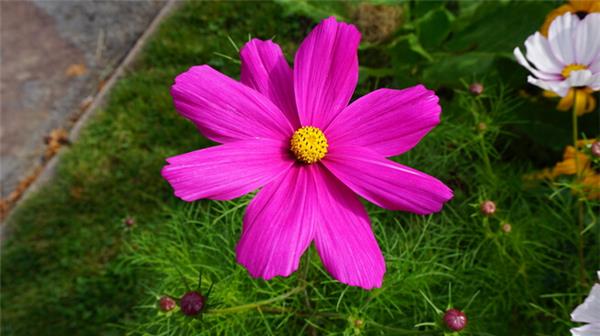
Steps / methods of how to plant Persian chrysanthemum
1. First of all, choose the mud. If you choose the mud in the place where the flowers and plants are lush, it will not be too barren and crushed.
2. Sprinkle part of the mud evenly in the flowerpot until 2/3.
3. Sprinkle flower seeds evenly on the mud.
4. Sprinkle the mud evenly on the flowerpot and cover the seeds with an appearance of about two centimeters.
5. Pour the right amount of water into a cool and ventilated place, wait for sprouting and move to the balcony, and hand in water every two to three days.
Points for attention in planting Persian chrysanthemum:
Like warm and wet to the sun, slightly resistant to early frost, lax requirements on the soil. The requirement of fertilizer and water is not strict, and 5 times the mature urine is applied every 10 days during the growth period.
Before germination should not be exposed to the sun or in a high temperature, Persian chrysanthemum how can not be watered too often, after germination can not continue to stay in a cool and ventilated place, have to bask in the sun.
High and medium-sized varieties need to set up pillars before flowering to prevent wind disaster and lodging. It grows rapidly and can be plucked many times to increase branching.
Red spider damage is easy to occur when it is hot, so it is advisable to prevent it as soon as possible. After the seeds are ripe, you can choose to cut off the colorful inflorescences and dry them in the sun to leave the seeds.
Persian chrysanthemum is a perennial root herb, sowing is simple. Recently, some flower friends asked how to plant Persian chrysanthemum seeds. Here is a summary of the process of Persian chrysanthemum seed sowing.
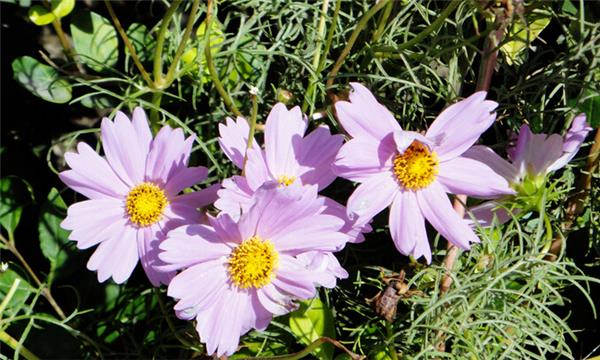
1. Sowing time of Persian chrysanthemum
When summer flowering is needed, the seeds should be sown from February to March in early spring, preferably under the condition that the temperature and humidity can be controlled. If you plan to sow seeds in the open air, you should sow in the middle of April when the temperature is suitable. When the temperature is suitable, seedlings can emerge in about a week.
The sowing medium should be loose and rich in organic matter, and a certain amount of mature organic fertilizer should be applied before sowing. When sowing, mix the seeds with a certain amount of sand and spread them evenly on the seedling bed, then cover the soil for about one centimeter. After sowing, the soil moisture should be maintained and the temperature should be controlled at about 18 ℃.
2. Management of Persian chrysanthemum at seedling stage.
When the seedlings grow 4 to 5 true leaves, they can be transplanted into a nutrition bowl and removed from the heart. There is no need to apply topdressing during the seedling growth period, so as not to cause excessive growth of branches and leaves and affect flowering.
3. Management of Persian chrysanthemum during its growing period
The plant type of Persian chrysanthemum is relatively tall, the stem is thin and weak, the flowers are large and beautiful, and they will lodge in the wind or other bad weather, affecting the ornamental value. Therefore, the whole growth process of Persian chrysanthemum needs to pick the heart many times and reduce watering, which can not only promote branching, but also dwarf the plant and avoid lodging in the growth process.
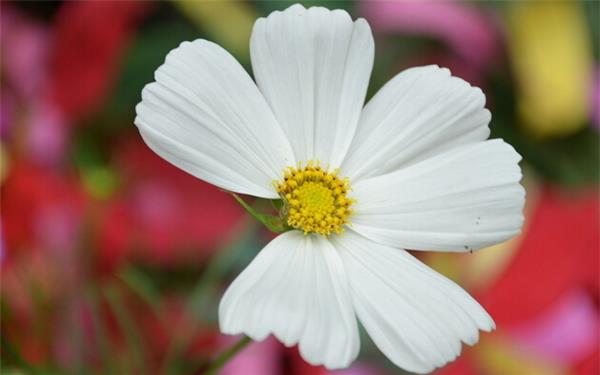
4. Pest control
The main pest of Persian chrysanthemum is powdery mildew, and red spiders are easy to appear when hot and dry (whether you like it or not, Persian chrysanthemum has a high probability of giving birth to red spiders, even if only two are planted, there may be red spiders), which should be detected and prevented as soon as possible. Powdery mildew occurs in leaves, tender stems, flower buds and buds, and there is often a gray-white powdery mildew layer in the diseased part, which hinders the growth and development of the damaged plants and distorts the leaves. In severe cases, the leaves dried up and the whole plant died.
The prevention and treatment methods are as follows: when planting, the density should not be too high, and good ventilation and light transmittance should be maintained; after the disease, the diseased leaves and plants should be cut off and destroyed in time to strictly prevent re-infection; at the initial stage of the disease, 15% powder is sprayed 1500 times, or 10% Le no disease wettable powder 1200 to 1500 times, the two drugs are used alternately, spraying 2 to 3 times in a row. In the early stage of the occurrence of red spiders, 40% dicofol EC was sprayed 1000 to 1500 times.
5. Cultivation of Persian chrysanthemum
Seedlings with 4-5 true leaves when transplanted, and heart-picking, can also be direct seeded seedlings. If the planting land is fertilized with base fertilizer, there is no need to apply fertilizer during the growing period. if the soil is too fertilised, the branches and leaves will grow easily and the flowering will decrease. During the period of high temperature from July to August, those who blossom are not easy to bear seeds. The seeds are easy to fall off after maturity and should be collected in the early morning. Persian chrysanthemum is a short-term plant, spring seedlings tend to have few leaves and flowers, summer seedlings are short, neat and blossom constantly.
Persian chrysanthemum should not be exposed to the sun or at a high temperature before germination. How can Persian chrysanthemum not be watered too often? after germination, you can't stay in a cool and ventilated place. You have to bask in the sun. So, what is the basic information of Persian chrysanthemum?
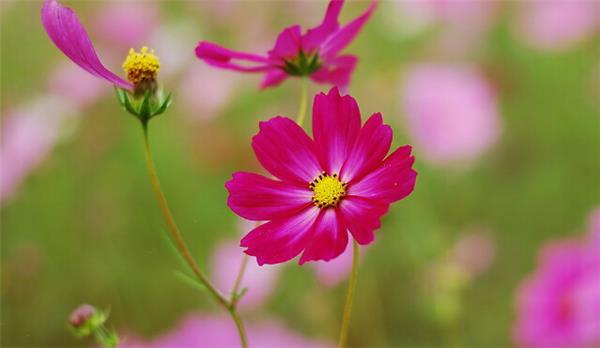
[morphological characteristics]
It is an annual herb with 30~120cm height, erect thin stems, many branches, smooth stems or puberulent hairs. Leaves opposite, ca. LOcm, bipinnatifid, lobes narrowly linear, entire toothless. Heads inserted on slender pedicels, terminal or axillary, flowering stems 5-8cm. The total coating film is 2 layers, and the inner edge is membranous. There are 8 petals with white, pink and crimson petals. The central part of the disk occupied by tubular flowers is yellow. Achenes have rafters, seed lifespan is 3-4 years, dry grain weight is 69. Flowering in summer and autumn. Horticultural varieties include white-flowered Persian chrysanthemum, large-flowered Persian chrysanthemum and purple safflower Persian chrysanthemum. Horticultural varieties are divided into early flower type and late flower type, as well as single and double petal.
[growth habits] like light, resistant to barren soil, avoid fertilizer, soil is too fertile, avoid heat, avoid stagnant water, do not adapt to high temperature in summer, not resistant to cold. Loose, fertile and well-drained loam is needed.
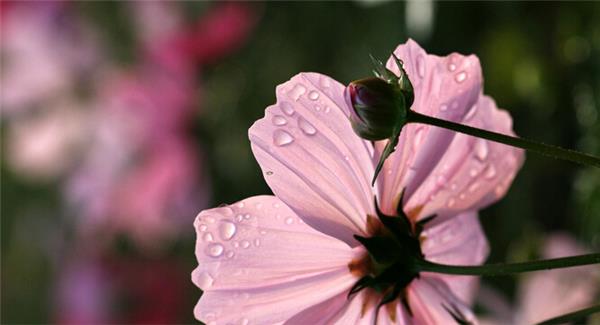
Summary: the above is about the introduction of the planting method of Persian chrysanthemum, through the above content, we should have some understanding of how to grow Persian chrysanthemum. I hope the above content will be explained to you.
[morphological characteristics]
It is an annual herb with 30~120cm height, erect thin stems, many branches, smooth stems or puberulent hairs. Leaves opposite, ca. LOcm, bipinnatifid, lobes narrowly linear, entire toothless. Heads inserted on slender pedicels, terminal or axillary, flowering stems 5-8cm. The total coating film is 2 layers, and the inner edge is membranous. There are 8 petals with white, pink and crimson petals. The central part of the disk occupied by tubular flowers is yellow. Achenes have rafters, seed lifespan is 3-4 years, dry grain weight is 69. Flowering in summer and autumn. Horticultural varieties include white-flowered Persian chrysanthemum, large-flowered Persian chrysanthemum and purple safflower Persian chrysanthemum. Horticultural varieties are divided into early flower type and late flower type, as well as single and double petal.
[growth habits] like light, resistant to barren soil, avoid fertilizer, soil is too fertile, avoid heat, avoid stagnant water, do not adapt to high temperature in summer, not resistant to cold. Loose, fertile and well-drained loam is needed.

Summary: the above is about the introduction of the planting method of Persian chrysanthemum, through the above content, we should have some understanding of how to grow Persian chrysanthemum. I hope the above content will be explained to you.
Related
- Wuhan Hospital Iron Tree Blooming Result Was Instantly Frightened by the Gardener Master
- Which variety of camellia is the most fragrant and best? Which one do you like best?
- What is the small blue coat, the breeding methods and matters needing attention of the succulent plant
- Dormancy time and maintenance management of succulent plants during dormancy
- Minas succulent how to raise, Minas succulent plant pictures
- What are the varieties of winter succulent plants
- How to raise succulent plants in twelve rolls? let's take a look at some experience of breeding twelve rolls.
- Attention should be paid to water control for succulent plants during dormant period (winter and summer)
- Watering experience of twelve rolls of succulent plants
- Techniques for fertilizing succulent plants. An article will let you know how to fertilize succulent plants.



